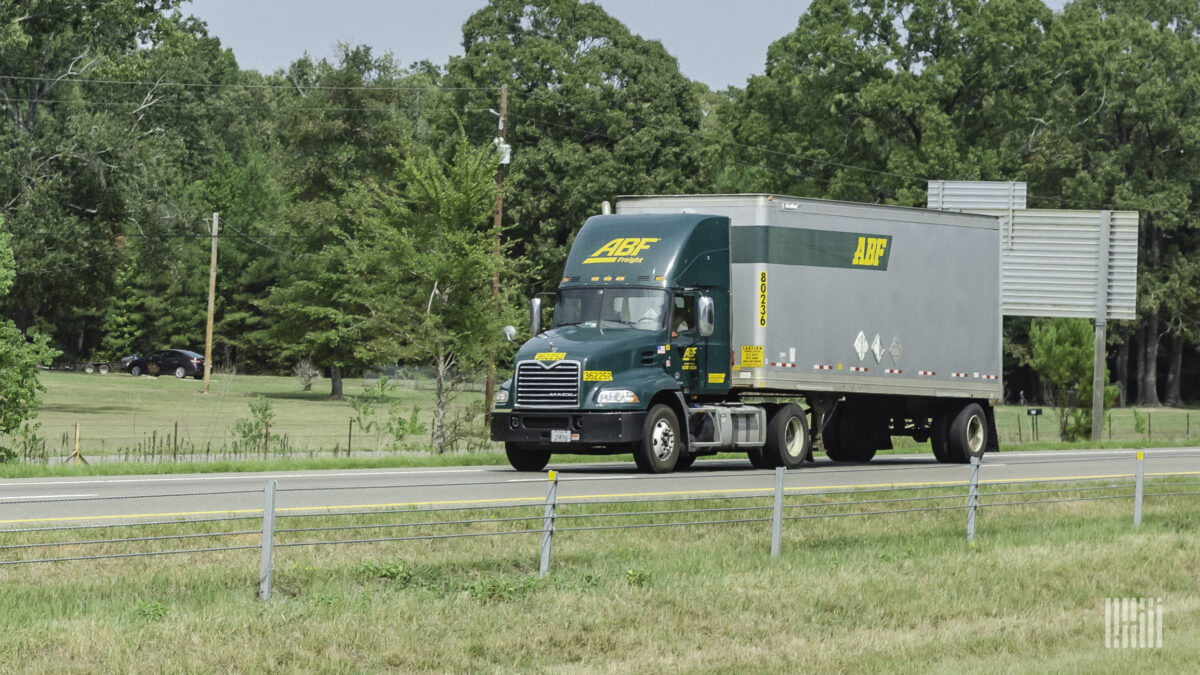The organization that oversees pricing in the less-than-truckload industry, in what it has called a major overhaul of its antiquated shipment rating system, said it will consolidate or eliminate a large volume of irrelevant classifications that make LTL transport a nightmare for shippers, carriers and intermediaries.
The National Motor Freight Traffic Association (NMFTA) said it has launched what it calls the “Classification Reimagination Project.” Under the initiative, NMFTA will maintain the core elements of a decades-old formula, known as the “National Motor Freight Classification,” that is used to set LTL prices. However, the group will eliminate a multitude of specific product subclassifications that it called complex, confusing and unnecessary.
The initiative stems from a survey of LTL stakeholders who said they wanted to keep the 86-year-old formula that classifies shipments based on four criteria: density, handling, stowability and liability. Each LTL shipment is assigned one of 18 numeric classifications ranging from 50 for heavy, dense items like bulk materials, to 500 for light, bulky items like pingpong balls.
The different codes are designed to ensure that rates accurately reflect the costs of moving different shipments. The formula also addresses the unique nature of LTL shipping where one trailer typically contains multiple commodities with diverse shipment profiles that are tendered by multiple shippers.
Over the decades, however, a multitude of subclassifications have emerged within each classification, turning the shipping, billing and payment process into a massive headache for all parties.
For example, there are 39 product classifications listed under the category of “cloth and fabric, dry goods and textiles.” Each of those subclassifications contains similar shipping characteristics, especially when applied to a shipment’s density, which in simplest terms is a calculation of its combined size and weight. However, LTL stakeholders have always been required to match up shipments to a specific subclassification, according to Joel Ringer, NMFTA’s vice president of classification.
As part of the new initiative, the 39 subclassifications will be eliminated and condensed under one classification, Ringer said.
NMFTA prefers to eliminate overly specific classification provisions rendered irrelevant when the shipping profiles are similar. It will also push to strip the classification language of much of the excess verbiage that has long been a problem for shipper and carrier alike.
“There will be fewer shipment distinctions, and the distinctions will be easier to understand,” said Ringer.
The program will also include minimum packaging requirements to ensure goods are protected against the rigors of LTL transport, where freight is moved from trailer to trailer and touches multiple hands from origin to destination.
It is increasingly commonplace for an LTL shipment to be scanned through machines that measure its dimensions in order to arrive at an accurate classification. The initiative now underway will add value to those IT tools, according to NMFTA executives.
The program will be constantly updated because companies will always come to market with no concepts such as packaging innovations, said Debbie Sparks, NMFTA’s executive director. One relatively near-term objective is to digitize the classification protocol so all shippers, not just frequent ones, could access the provisions online with relative ease, Sparks said.












David L Miller
Follow the money — IF this isn’t being driven by consumer groups, I’d be shocked — The NMFC was established to help insure that Carriers had a base-line from which to establish base-rates —- IF successful, this action will NOT end well for the asset-based service providers — Typically, light, or NO-asset logistics companies will LOVE an outcome that subordinates the asset-based carriers ability to cover their costs and insure a profit –
Clint
what does it matter? I shipped a used engine on a pallet. ltl company reclassified it as furniture and held it hostage for twice the money at the receiving terminal.
Steve
who held your package, engine hostage?
please reply
Dustin Snipes
Elimanating the NMFTA and going to freight rates based on density is the best solution. Make people measure and weight their freight.